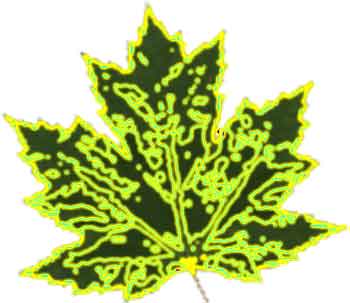
Unit 1
Introduction

|
We tend to think science has explained everything when it has
explained how the moon goes around the earth. But this idea of a clocklike
universe has nothing to do with the real world. - Jim Yorke, University of Maryland |
These tutorials will give you the opportunity to explore, to try, even to "play'' with the random, disordered, often bewildering patterns and processes that permeate our lives:
|
Astronomers model the patterns found in giant spiral galaxies through the random processes associated with stellar birth and death. Biologists investigate the apparently random branched structures of neurons, the cells that form the brain and nervous system. Chemists are intrigued by the central role played by the random network of bonds in liquid water. Doctors try to understand the bewildering process of the immune response and disease spread. Engineers study the unpredictable flow behavior of water or gas when injected into petroleum reservoirs. Forest rangers try to predict the path of forest fires, after which environmentalists study the progress of regrowth. Geologists study the meandering of rivers, tortuous coastlines, and awe-inspiring mountain landscapes. . . . Zoologists study population dynamics and ecology. |
Accordingly, these tutorials draw from examples of current research in biology, chemistry, earth science and physics. For each experimental system presented, students study scientific models of microscopic processes that bring about the formation of the macroscopic pattern observed. These models share a common theme: random behavior at a microscopic scale can lead to the formation of patterns at the macroscopic scale. These models are introduced using simple hands-on demonstrations–sometimes using props such as a checkerboard set and coins to flip–and are then explored further using computer simulation. Every simulation provides opportunities to explore the macroscopic consequences of changes in the system's behavior at the microscopic level.
Topics which can explored using these tutorials include:
|
Chemistry: The gas laws, diffusion, precipitation, electrochemistry, the differences between phases of matter, gels, mass conservation, atomic bonding, concepts of equilibrium, Brownian motion, mixing, Liesegang patterns, surface tension and surfactants, ionic conductivity, solvation, acid-base reactions, molarity, solubility products, and so on. Physics: Transport properties and phases of matter, diffusion, mass conservation, kinetic basis of thermodynamics, orders of magnitude, charge conservation, electric fields, electrical units, pressure, compressibility, viscosity, microscopic dynamics, and so on. Biology: Bacteria growth, root systems, DNA sequencing, heartbeats, neurons, circulatory system, population spread, drug diffusion, immune system, cell membranes, osmosis, and so on. Earth Sciences: Stream and coastal erosion, land forms, river networks, mountain landscapes, formation of dendritic minerals, crack formation, earthquakes, avalanches, planetary geology, and so on. Applied Mathematics: Similarity, patterns, size transformations and scaling, dimensions, area and volume formulae, concept of a limit, recursion, mathematical induction, symmetry, exponents and logarithms, as well as material from probability theory such as expected values and frequency distributions, and so on. |
If you work through these activities, you will be able to explain the formation of natural patterns, and draw connections and analogies among them. In short, you will discover the whole new world of Patterns in Nature.
|
Previous:
Contents
|